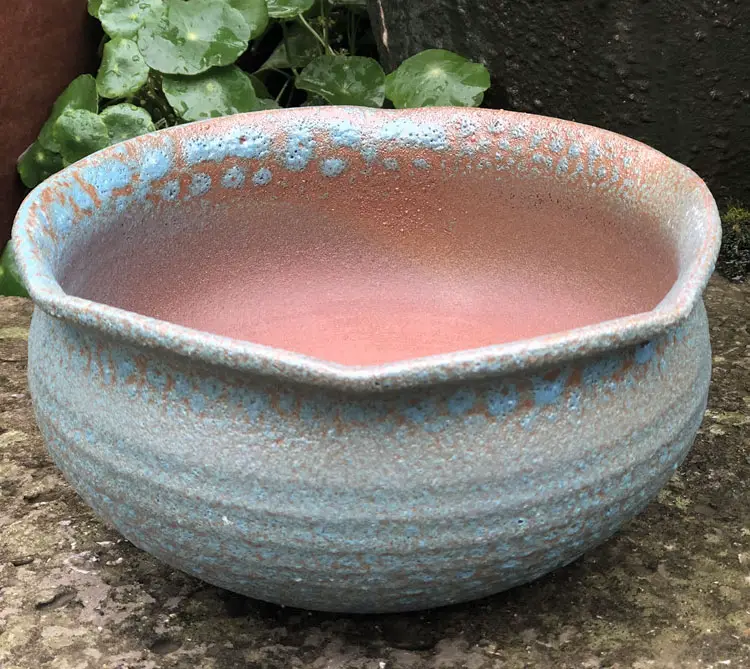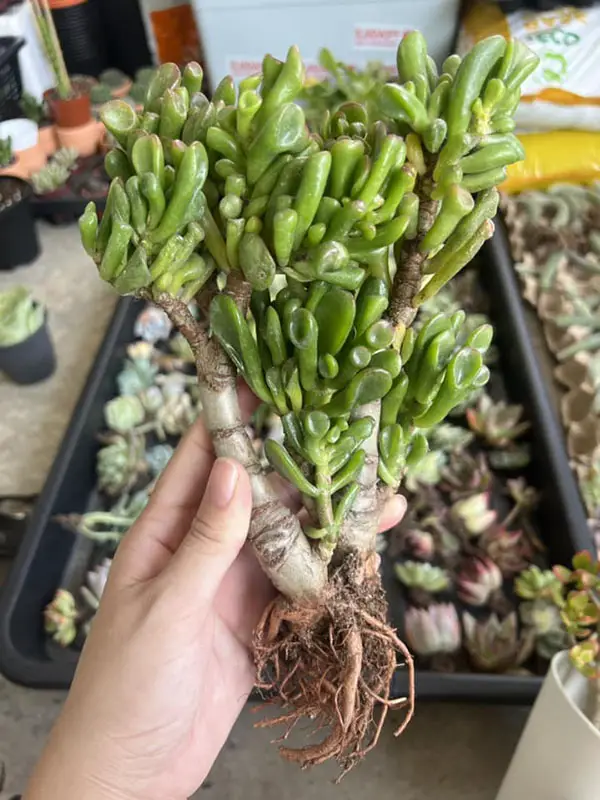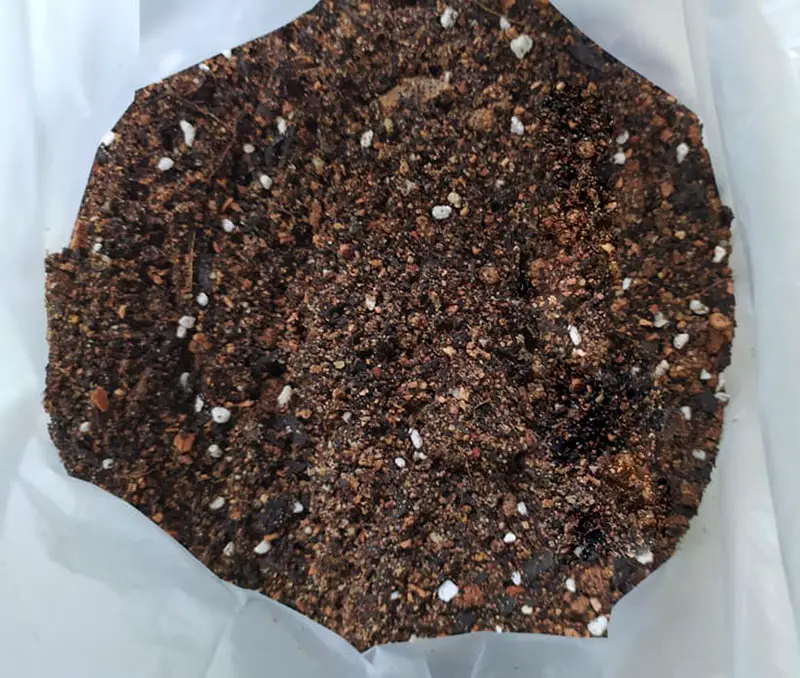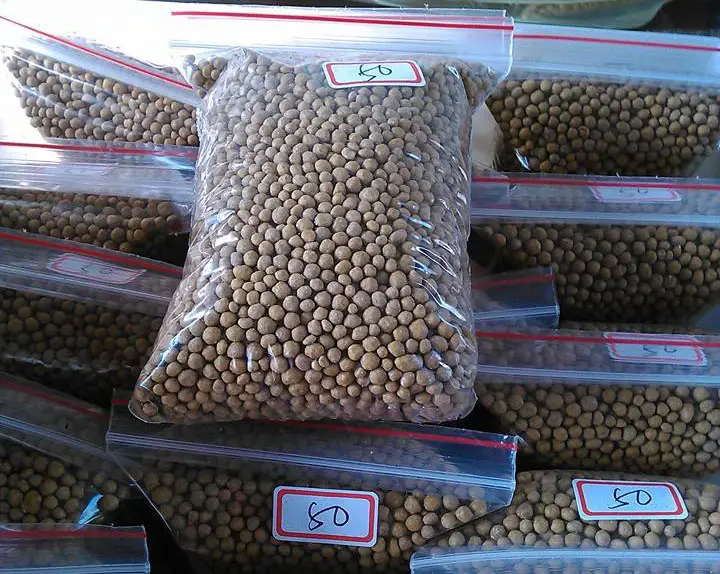Do you have tall succulents that need to be repotted? Don’t worry, you don’t have to be a gardening expert to get the job done. This step-by-step guide will help you easily repot your tall succulents without any fuss.
Repotting your succulents doesn’t have to be intimidating or difficult. With the right supplies, a little bit of patience, and this guide in hand, you can have your succulents looking their best in no time.
If you want to make sure your tall succulents look fresh and healthy all year round, then it is important that they are repotted regularly
. So, let’s get started! Read on for the ultimate step-by-step guide to repotting tall succulents.
1. Gather Supplies
First, you’ll need to gather up the necessary supplies before beginning the repotting process. To get started, you’ll need a new pot with drainage holes, potting soil specifically designed for succulents, and some gardening gloves. It’s also helpful to have a spoon or scoop handy to make sure the soil is distributed evenly in the new pot.
Next, you’ll want to carefully remove your succulent from its current pot. Gently shake off any excess dirt and inspect the roots of your plant for signs of rot or damage. If you find any, prune them off before putting your plant in its new home. Additionally, if your tall succulent has become top-heavy or leggy over time, consider cutting it back to encourage fuller growth.
Finally, it’s time to repot your succulent! Place a few inches of potting soil in the bottom of the new pot and then place your plant on top. Add more soil around it until it’s fully covered and tamp it down gently so that it’s secure in its new home. Water lightly and let sit in indirect sunlight until it has adjusted to its new environment before watering again.
2. Prepare The Container
Before you repot your tall succulent, it’s important to prepare the container. The first step is to choose a pot that is slightly larger than the plant’s current one, as this will give it plenty of room to grow. Make sure the pot has drainage holes in the bottom, so excess water can escape and air can circulate. To further ensure proper drainage, consider adding a layer of rocks or gravel at the bottom of the pot. This will help prevent waterlogging and keep your succulent healthy.
Once you have selected a pot, make sure to fill it with good-quality soil designed for succulents or cacti. Potting soil should be loose and well-draining; never use garden soil, since it tends to be dense and hold too much moisture for succulents. You may also want to mix in some organic material such as compost or manure for added nutrients.
When you’ve finished prepping your container and filling it with soil, your tall succulent is ready to be repotted! All that’s left is carefully transferring the plant into its new home – taking care not to damage its roots – then adding some fresh soil around the base of the stem if necessary. With these steps completed, your succulent will soon start flourishing in its new environment.
3. Trim And Clean The Succulent
The next step in repotting tall succulents is trimming and cleaning them. Cut off any dead or overgrown leaves with scissors before taking the succulent out of its original pot. This will help make sure the succulent will fit in the new pot without being too crowded. After trimming, it’s important to give the plant a good rinse with lukewarm water. Doing so will get rid of any dirt on the leaves, as well as any bugs or pests that might have been living there.
Once the succulent has been cleaned and trimmed, you’ll want to inspect it for any signs of disease or rot. If you notice anything out of the ordinary, such as discolored leaves or stem spots, take extra care when handling and repotting it. Additionally, if you see unhealthy-looking roots, remove them before putting your plant into its new pot.
Now that your succulent has been prepped for repotting, you’re ready to transfer it into its new home! Be sure to fill your container with a quality soil mix that drains quickly and has plenty of aeration for root growth. Also, keep in mind that taller succulents need a deeper pot than their shorter counterparts; this will help provide extra stability as they grow upwards.
4. Separate The Succulent
When repotting tall succulents, it’s important to separate the individual pieces. This ensures that each piece gets adequate drainage and space to grow. To do this, start by gently loosening the soil around the root ball of the plant. Then take a sharp tool or knife and cut between the leaves of the succulent in order to separate it into two or more clumps. Be sure to wear gloves while doing this to protect your hands from any sharp thorns that may be present on some species.
After separating, you can now remove each piece carefully from the original pot. Place each component in its own pot with a suitable soil mix and lightly water. Make sure to use an appropriate size pot for each piece; if it’s too small, it won’t allow for sufficient growth and if it’s too big, there’s a risk of over-watering and root rot.
Once all pieces are in their new pots, you can place them in a bright spot that receives indirect sunlight. Regularly check for signs of stress such as wilting or yellowing leaves and adjust your watering schedule accordingly. With proper care, your tall succulent will thrive in its new home!
5. Add Soil
Adding soil is a crucial step in repotting tall succulents. Before you do, make sure the pot you’ve chosen is large enough to accommodate the roots of your plant. You’ll also want it to be an appropriate size for the amount of soil you need to add.
Once you have the right pot and soil, it’s time to begin adding soil. Start by adding a layer of dirt that’s 1-2 inches deep. You can use a scoop or spoon to help spread the soil evenly throughout your pot. Make sure to press down lightly as you go along so all areas of the pot get filled.
After you’ve added the first layer, add more soil until it reaches just below where your succulent’s stem joins its roots. This will ensure that your succulent has plenty of room for growth and won’t become rootbound in its new home. When you’re done, give your succulent a good drink of water and watch it grow in its new pot.
6. Position The Succulent In The Pot
In the step-by-step guide to repotting tall succulents, the next step is to place the plant in the pot. This is a crucial step because it’s important to make sure that the plant is placed at an appropriate distance from the edges of the container.
To do this, start by putting some soil into the pot and lightly packing it down. Then, carefully place the succulent on top of it so that its roots are nestled in place. You may need to add more soil around the sides and fill any gaps between them and the walls of the pot.
It’s important to make sure that your succulent is sitting firmly but not too tightly in its new home. If you’ve done everything correctly, your repotted succulent should be ready for its next stage of growth!
7. Fill The Pot With Soil
When it comes to filling the pot with soil, there are a few things to keep in mind. Firstly, you want to make sure the soil drains well. Succulents need well-draining soil in order to thrive, and if the soil is too water-retentive it can lead to root rot. Mix equal parts of potting soil, perlite, or pebbles to make sure your soil will drain well. You should also add some organic matter, such as compost or topsoil, for extra nutrients.
Once you’ve got a good mixture of soils and additives, you’re ready to fill your pot. Start by adding enough of the mixture so that when you place the succulent’s root ball on top, its base is about 1 inch below the rim of the pot. This allows for water drainage and prevents overfilling when watering. Gently tap down any air pockets as you fill up the remainder of the pot – be careful not to press down too hard as this could damage your plant’s roots!
Finally, after filling your pot with soil and ensuring that it is at the correct height relative to your succulent’s root ball, give it a gentle watering until moisture starts coming out from the drainage holes at the bottom. This will help settle any air bubbles and kickstart your succulent’s new home!
8. Water The Succulent
Watering your succulent is the next step in repotting it. Before doing so, make sure you’ve filled the pot with soil first. That way, the succulents are getting all the nutrients they need.
When watering your succulent, it’s important to be gentle and not overdo it. Too much water can cause root rot and lead to death for your succulent. To prevent this from happening, use a watering can or cup and sprinkle water on top of the soil until it’s damp but not soaked. This will make sure that your succulent gets enough water without getting so much that it drowns.
Once you’ve watered your succulent, don’t forget to place it in an area with indirect sunlight so that it can get enough light to grow. Make sure to check on it regularly and adjust its location as needed to keep it healthy and thriving!
9. Place The Pot In A Sunny Location
To ensure your tall succulent thrives, it’s important to provide the right environment. After watering the succulent, you’ll want to place the pot in a sunny location. This will allow your succulent to receive plenty of light, as this kind of plant needs at least four hours of sunlight a day for optimum growth.
When choosing a spot for your succulent, be sure to find an area that is relatively warm and has good ventilation. Make sure not to put the pot directly on concrete or other cold surfaces, as this can lead to root rot. If you don’t have an outdoor space that stays warm enough, you can place your succulent on a windowsill indoors or purchase a grow light to simulate natural sunlight.
Once you’ve found an appropriate spot for your succulent, it’s time to place the pot there and let it bask in the sun! Over the next few weeks, keep a close eye on your plant and move it if you need to. With adequate sunlight and proper care, your tall succulent should keep thriving for years to come.
10. Monitor Watering
Monitoring watering is an important part of repotting tall succulents. Without adequate hydration, these plants won’t be able to thrive. To ensure they get the right amount of water, it’s best to check the soil regularly and provide extra water if needed.
It can be difficult to know how much water a succulent needs, but in general, it should be watered when the soil is completely dry. It’s also important to avoid overwatering as this can lead to root rot or other issues. A good rule of thumb is to wait until the top inch or two of soil feels dry before watering again.
When watering succulents, always make sure that you’re using lukewarm water and that it is draining properly from the pot – otherwise there’s a risk of fungal or bacterial growth. Taking care when monitoring their hydration will help keep your tall succulents healthy and looking great for years to come!
11. Fertilize Regularly
Fertilizing your tall succulents regularly is an important part of keeping them healthy. This involves using specialized fertilizers designed specifically for succulents. Most of the time, these fertilizers come in liquid form and can be put right on the soil. Follow the directions on the fertilizer package and don’t use more than what is suggested.
When applying fertilizer, make sure to evenly distribute it throughout the potting soil. This will ensure that each succulent receives sufficient nutrition, allowing them to grow and thrive. Also, you shouldn’t give your succulent plants too much fertilizer because that can hurt them.
During their active growing season, you should also fertilize them at least once a month. During this time, your succulents need extra nutrients in order to stay healthy. With consistent fertilizer application, you can ensure that your tall succulents stay healthy and continue to flourish for years to come!
12. Prune For Health
Pruning your tall succulents is an important part of keeping them healthy and growing. Not only does it encourage new growth, but it helps to keep the plant from becoming overcrowded or top-heavy. Pruning can be done with a pair of sharp scissors or pruning shears. Start by removing any dead or dying leaves and stems, then start pruning the outermost layer of leaves and stems. This will help to maintain a uniform shape for the plant, as well as to keep it from becoming too big.
It’s important to remember that too much pruning can hurt the succulent, so don’t take off more than a quarter of its total growth at once. If you find that certain branches are becoming too long, simply cut them back to the desired length without taking off too much material. You can also pinch off any excess buds that form during periods of active growth in order to promote better overall health for your succulent.
By regularly pruning your tall succulents, you’ll be able to keep them looking their best while encouraging their continued growth and vitality. With a little bit of love and care, you’ll have beautiful plants in no time!
13. Repot Every Three Years
Repotting tall succulents is an important step in ensuring the health of your plants. When done correctly, it can help them flourish and stay healthy for years. Repotting should take place every three years, to give your plants the best chance of survival.
In order to properly repot a tall succulent, you’ll need to make sure you have the right materials and tools on hand. You’ll need a pot with drainage holes, fresh soil, pruners or scissors, and gloves if desired. Be sure to choose a pot large enough for the plant’s roots to fit comfortably in.
When it comes time to repot your succulent, you should start by removing it from its existing pot and gently shaking off any excess dirt from the roots. Loosen up any tightly wound roots before transferring your plant into its new home with fresh soil. If necessary, prune away any dead or dying leaves while taking care not to damage the healthier parts of the plant. Once all of these steps are complete, water thoroughly and enjoy watching your tall succulent thrive in its new environment!
14. Troubleshooting Tips
Troubleshooting tips are essential when repotting tall succulents. As you move through the process, you might find yourself stuck, or unsure of what to do next. Knowing how to troubleshoot these issues can save you time and help ensure your succulent’s health.
If the succulent’s roots have grown too large for its pot, gently loosen them before attempting to remove them. If they won’t come out easily, try using a pair of scissors to shorten them. This will make it easier to take the plant out without damaging its delicate root system.
If you’re unhappy with the size of a new pot, don’t be afraid to switch it up! Make sure that whatever size container you choose has plenty of drainage holes at the bottom so that excess water can escape. Also, be sure to use fresh soil when transferring your succulent into a new pot – this will provide your plant with essential nutrients and prevent any fungal diseases from developing in its environment.
By following these troubleshooting tips, you can repot tall succulents with ease and confidence – ensuring that they stay healthy for years to come.
15. Enjoy Your New Succulent!
Now that your succulents have been safely repotted, it’s time to enjoy! Make sure that you provide the right environment for your new potted plants. Place them in an area with plenty of bright, indirect sunlight and water them thoroughly once a week. Dry soil is ok, but make sure to avoid overwatering.
To ensure that your succulent thrives in its new home, it’s important to monitor the environment and adjust accordingly. Check your succulent regularly for signs of stress such as yellowing leaves or wilting stems and adjust the amount of sunlight or water accordingly.
It may take some trial and error before you find the perfect balance for your succulent’s needs, but with a little patience and care, you will be rewarded with a beautiful display of healthy succulents in no time. With these simple tips, you can get back to enjoying your tall succulents!
Conclusion
Successful repotting of a tall succulent can be rewarding and fulfilling. The key is to be patient, take your time, and follow the steps outlined in this guide. At the end of the process, you should have a healthy and thriving succulent that will bring life to any room.
If you encounter any problems during the process, remember that troubleshooting tips are available to help you find solutions. With some trial and error, you can figure out what works best for your plant and environment.
Overall, repotting a tall succulent doesn’t have to be intimidating or stressful. By following this guide step-by-step, you can enjoy a beautiful new houseplant that will bring life into your home for years to come!




